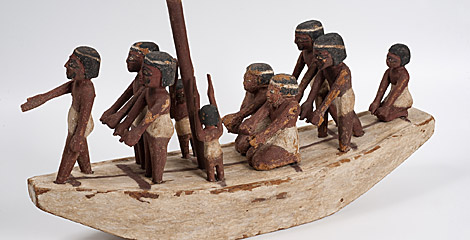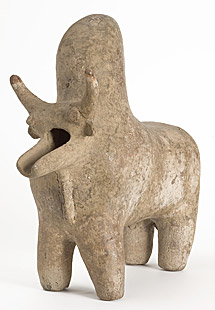Posted by
The Jeweler on October 1, 2011 ·
The ancient Greeks believed opals gave their owners the gift of prophecy and guarded them from disease. Europeans have long considered the gem a symbol of hope, purity, and truth.
Numerous legends and tales surround this colourful gemstone, which can be traced back in its origins to a time long before our memory, to the ancient dream time of the Australian aborigines.
It is reported in their legends that the creator came down to Earth on a rainbow, in order to bring the message of peace to all the humans. And at the very spot, where his foot touched the ground, the stones became alive and started sparkling in all the colours of the rainbow. That was the birth of the Opals.Almost ninety-five per cent of all fine opals come from the dry and remote outback deserts.
How did opal get its name:The name Opal was probably derived from Sanskrit “upala“, meaning ”valuable stone“. This was probably the root for the Greek term “opallios”, which translates as “colour change”.Pliny, the famous Roman author, called Opal a gemstone which combines the best possible characteristics of the most beautiful of gemstones: the fine sparkle of Almandine, the shining purple of Amethyst, the golden yellow of Topaz, and the deep blue of Sapphire, ”so that all colours shine and sparkle together in a beautiful combination“.
Play-of-Color Phenominan:Opal’s colour play emanates a very special attraction and fascination. But what causes this phenomenon? This question was impossible to answer for a very long time. Only when in the 1960s a team of Australian scientists analysed Opals with an electron microscope, it was discovered that small spheres from silica gel caused interference and refraction manifestations, which are responsible for the fantastic play of colours. The spheres, which are arranged in more or less compact structures, succeed in dissecting the light on its passage through the gemstone and turning it into all the colours of the rainbow, always new and always different.
The Creation of Opal:The history of Australian Opal began actually millions of years ago, when parts of Australia were covered by a vast inland sea, and stone sediment was deposited along its shoreline. When the water masses flooded back, they flushed water containing silica into the resulting cavities and niches in the sedimentary rocks, and also the remains of plants and animals were deposited there. Slowly the silica stone transformed into Opal, for basically Opals are simply a combination of silica and water. Or, to be more precise: Opals are a gel from silica, with varying percentages of water.
Cutting and Wearing of Opal:
In order to best bring out the play of colour in a Fine Opal, the stones are cut and polished to round or oval cabochons, or any other softly domed shape , depending on the raw material. Only the best qualities of Fire Opal, however, are suited to faceting. The Opal cutter will first of all carefully remove any impurities using a diamond cutting wheel, before working out the rough basic shape. The comes the fine cutting, the finishing with sandpaper and then the final polishing with a wet leather wheel.
Due to the differing percentage of water, Opals may easily become brittle. They always contain water – usually between 2 and 6 per cent, but sometimes even more. Thus if stored too dry or exposed to heat over a longer period of time, Opals will show fissures and the play of colour will become paler. Therefore, Opal jewellery should be worn as often as possible, for then the gemstone will receive the needed humidity from the air and from the skin of its wearer.
What Determines Opal’s Value:Opal’s value is not only determined by the body colour, transparency and factors based on place of occurrence. (Body colour refers to the basic colour of the gemstone, which can be black, dark or light and coloured). It is also important if the stone is transparent, translucent or opaque. And the opalizing effect may also influence the transparency.The most important criterion for determining the price of an Opal, however, is the play of colour, the colours as such and their pattern. If the colour red appears when looking through the stone, all the other colours will appear also. For evaluating Opals the thickness of the Opal layer is considered, the beauty of the patterning, the cut, weight and finish.
Although experts divide gem opals into many different categories, the main types are:
•White opal – translucent to semi-translucent with play-of-color against a white or light gray body color.
•Black opal – translucent to opaque with play-of-color against a black or other dark body color.
•Fire Opal – transparent to translucent with brown, yellow, orange, or red body color. This material, which often does not show play-of-color, is also known as “Mexican opal,” “gold opal,” or “sun opal.”
The market supply of fine black opal is extremely limited, but white and fire opals are generally available in a wide range of sizes. You’ll usually see black or white opals fashioned as cabochons and set in rings, pendants, pins, or earrings. Fire opals are used in the same kinds of jewelry, but they’re often faceted. All three types occasionally appear as beads and carvings.
The fantastic colour play of Opal reflects changing emotions and moods of people. Fire and water, the sparkling images of Boulder Opal, the vivid light flashes of Black Opal or the soft shine of Milk Opal – striking contrasts characterise the colourful world of this fascinating gemstone. Maybe this is the reason why it depends on our daily mood which Opal we prefer. Opals are like human emotions: you always experience them different and anew.
Sources: Australia, Brazil, Mexico
Hardness & Toughness: Opal’s harness rates between 5 to 6.5 on the MOHS scale. Its toughness is rated Very poor to Fair
Stability: High heat or sudden temperature change can cause fracturing. Opals are generally stable to light, but heat from intense light can cause fracturing (known as “crazing”). Opals are attacked by hydrofluoric acid and caustic alkalis. Loss of moisture, and crazing, can result from storage in airtight containers, such as safe deposit boxes.
Care and Cleaning: Opals can be cleaned with warm, soapy water. Avoid ultrasonic and steam cleaning.
Imitations & Synthetics: Glass and plastic have been used to imitate opal, and synthetic opals are available in a variety of colors.
Presentan un video sobre una mina de ópalos que se encuentra cerca de la capital de ópalos en Australia.
http://www.theonlinejeweler.org/opal-the-worlds-most-popular-phenominal-gemstones/















 Bastet (Egipto), 715 - 332 a. C.
Bastet (Egipto), 715 - 332 a. C. Modelo de embarcación, Egipto, 2050 - 1750 a. C.
Modelo de embarcación, Egipto, 2050 - 1750 a. C.

































